Blepharitis
- Home
- Blepharitis
Blepharitis
What is it?
Blepharitis is inflammation of the eyelids.
Specifically, inflammation of the margin of the eyelids (the thin strip between the lashes and the eyeball).
The lid margin contains several structures including the eyelashes and their follicles located in the skin at the front, and Meibomian glands located within a firm structure, called the tarsal plate, at the back of the eyelid.
The tear film, that covers the cornea, also has an influence on the state of the eyelid margin.
The eyelashes and follicles contain bacteria and occasionally a parasite, known as demodex, may also colonise this area.
The Meibomian glands secrete an oil (meibum) that is an essential part of the tear film. If the glands fail to function properly (Meibomian gland dysfunction) it affects the stability of the tear film and may result in ocular symptoms.
Blepharitis is the result of abnormal function in one or more of these areas.
What causes it?
The skin contains bacteria. Some people have a greater number of organisms at the base of their lashes (within the follicles) which can lead to the appearance of dandruff or scales. Others may have problems with the Meibomian glands in the tarsal plate of the eyelid. These glands help the tears to function properly and if they don’t work effectively it may lead to inflammation and dry eye symptoms.Do I have it?
The symptoms may include redness, burning, irritation, grittiness, itching, frequent blinking, light sensitivity and flakes around the roots of the eyelashes. The condition can be diagnosed by your ophthalmologist using a slit lamp microscope.How is it treated?
There is often confusion about the correct treatment of blepharitis.
This stems from the fact that it may be caused by several underlying problems, each of which requires a different treatment.
Anterior blepharitis is caused by micro-organisms and responds well to lid hygiene. Occasionally your ophthalmologist may recommend a course of antibiotic ointment to apply to your lashes at night in order to reduce the bacterial load in the follicles.
A detailed description of lid hygiene can be found here.
I would recommend keeping a container of Q-tips and a second small container of dilute baby shampoo on your basin. Easy access will improve compliance.
The baby shampoo solution contains 1 part baby shampoo and 10 parts tap water.
The solution can be kept for a week before replacing it.
Use a Q-tip (cotton tip) that has been dipped intothe water and baby shampoo to gently scrub the lashes of the lower lids as follows;
With your free hand, place your index finger on the lower lid, below your lashes, and gently pull the finger down a short distance. This will allow the lid margin to move away from the cornea and you will be able to treat the lashes without risk of touching the eyeball with the Q-tip.
It is also possible that the micro-organism causing the blepharitis is a mite called demodex follicularis. These mites are microscopic and live in the lash follicles. They can be effectively treated with a 50% solution of tea tree oil. Lower doses are less effective and higher doses risk ocular irritation. Your ophthalmologist will advise if this treatment is required.
Posterior blepharitis is associated with oily skin and a number of skin conditions, including seborrheic dermatitis and rosacea.
Meibomian gland dysfunction is frequently present which may result in reduced secretion due to blockage of the meibomian glands. The meibum becomes thick, like toothpaste, and cannot easily be expressed from the glands.
The mainstay of treatment is warm compresses which involves heating the eyelids in order to reduce the viscosity of the meibum, followed by gentle pressure on the eyelids to encourage expression of the secretions.
Your ophthalmologist may also recommend omega 3 fatty acids and a number of topical treatments to improve your symptoms.
- Heat a flannel under a running hot water tap.
- Keep the water about as hot as you can safely and comfortably tolerate.
- Apply the flannel to your closed lids for 60 seconds.
- Keep you lids closed and with your finger apply gentle pressure to the lids, massaging them for 30 seconds.Repeat the process to treat all 4 lids.






